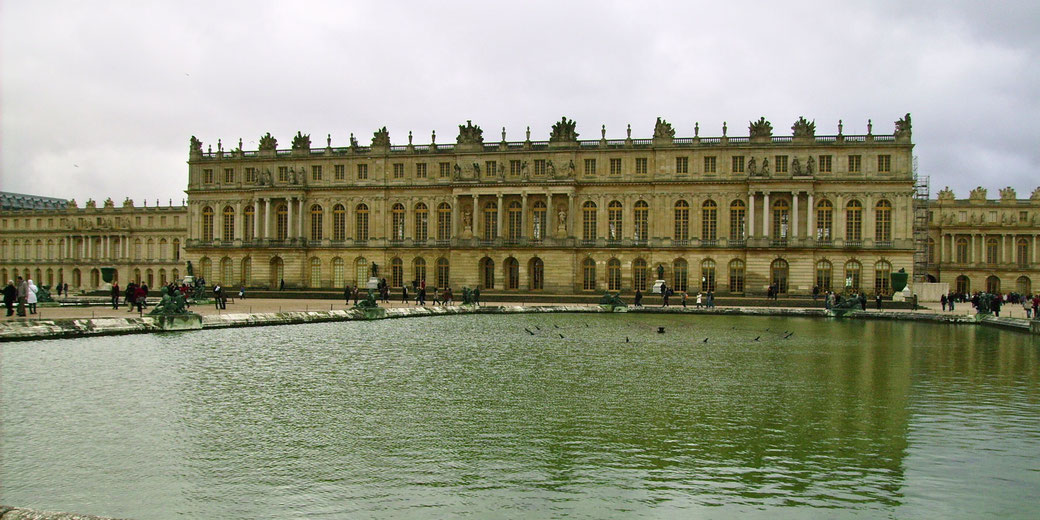The heavy price of peace: What happened at the Treaty of Versailles?

On June 28, 1919, in the Hall of Mirrors at the Palace of Versailles, a treaty was signed that officially ended World War I.
It aimed to bring about world peace after years of unspeakable slaughter. However, due to the harsh terms placed on Germany, along with heavy financial penalties, it sparked deep resentment in Germany, setting off political and social upheaval that would eventually lead to World War II.
While many hoped the treaty would ensure lasting peace, its consequences proved far-reaching and controversial.
How to end a war
Military operations in World War One concluded with an armistice at 11am on November 11, 1918.
An armistice is a formal agreement between warring parties to cease hostilities. It does not end a war but allows for negotiations towards peace.
Therefore, the war's official end did not come until a formal treaty document could be discussed, agreed upon, written, and then signed by all parties.
Documents like these usually decided who was to blame for the start of the war, and what their punishments should be.
As a result, the treaty was named after the location where it was created: the palace of Versailles, just outside of Paris in France.
The negotiations for the Treaty of Versailles began on January 18, 1919, on the anniversary of the German Empire's proclamation in the same Hall of Mirrors at Versailles in 1871.
The four main global leaders who led the discussions and negotiations were David Lloyd George of Britain, Vittorio Orlando of Italy, Georges Clemenceau of France, and Woodrow Wilson of the United States.
They met together in 1919 to consider how Germany would be compelled to pay for the devastation caused by World War One.
President Wilson brought a 14-point strategy with him that he felt would bring Europe peace if the treaty was based upon it.

President Wilson's 14-point plan
- There should be no secret treaties between powers, according to open diplomacy.
- Freedom of Movement - There should be 'freedom of the seas': that international waters should remain neutral and open to navigation in both peace and war.
- Free Commerce - Barriers to cross-border trade, such as customs taxes, should be eliminated.
- Disarmament on a Global Scale - All countries should decrease their military forces to the smallest possible size.
- Colonies - Colonies owned by European powers should have a vote in their own destiny.
- Russia - Russians should be free to run their government as they see fit, and that government should be recognised, supported, and welcomed.
- Belgium - Belgium should be evacuated and returned to its pre-war state.
- France - Alsace-Lorraine, as well as any areas taken away during the war, should be returned.
- It is necessary to redraw the Italian border according to nationality.
- National Self-Determination - Wherever feasible, national groupings in Europe should be allowed autonomy.
- Romania, Montenegro, and Serbia - All three countries should be evacuated, and Serbia should have a seaport.
- Turkey - The Turkish people should have a say in their own destiny.
- Poland - Poland should become a self-contained country with a seaport.
- League of Nations - To ensure future world peace, an assembly of all nations should be convened.
Negotiating the treaty
On the basis of these fourteen criteria, Germany expected a treaty. However, discussions between the 'big four' of Lloyd George, Orlando, Clemenceau, and Wilson did not go easily.
Wilson thought that enacting his fourteen ideas was the best way to ensure perpetual peace.
The French, on the other hand, wanted the vanquished nations punished harshly and thought Wilson's approach was too mild.
Although Lloyd George allied with Wilson in private, despite his concerns about Communism, the British public, like Clemenceau, wanted Germany punished harshly.
Lloyd George was well aware that siding with Wilson would result in him losing the following election.
After much deliberation, an agreement was ultimately achieved. On June 28, 1919, the Germans were called to the Hall of Mirrors at Versailles to sign the final version of the treaty.
Smaller nations, such as Belgium, Serbia, and Japan, also participated in the negotiations, hoping to secure compensation or territorial gains from the defeated Central Powers.
Importantly, Vittorio Orlando of Italy left the negotiations before they concluded due to disagreements over territorial claims.
As a result, he did not sign the Treaty.
The final terms
The final version of the Treaty of Versailles contained 440 clauses: the first 26 focused on the creation of the League of Nations, while the remaining 414 detailed how Germany was to be punished.
Here is a brief summary of the main details:
- The League of Nations was to be set up, which was an international body designed to maintain world peace.
- A 'War Guilt clause' forced Germany to accept sole blame for starting WWI. This is more formally known as 'Article 231' of the Treaty of Versailles.
- Germany was ordered to pay for the cost for the damage caused during the war. The final total was eventually set at £6.6 billion in 1921.
- Germany's army was to be reduced to a maximum of 100,000 men.
- Germany was not allowed to own military tanks.
- Germany's navy was only allowed six ships but weren't allowed submarines.
- Germany was not allowed to own an air force.
- The Rhineland was demilitarized, meaning Germany couldn't station troops there, but it remained under German sovereignty.
- Germany was not allowed to join politically with Austria.
- The region of Alsace-Lorraine was handed back to France.
- Land was taken from the former Austro-Hungarian Empire to create regions of Czechoslovakia, while the German territories of West Prussia and parts of Upper Silesia were given to Poland.
- Germany lost all its overseas colonies, which were distributed among the Allied powers under League of Nations mandates.
Germany's leaders viewed the Treaty of Versailles as a 'Diktat'—a dictated peace—since they were excluded from the negotiations.
As a result, Germany initially refused to sign the Treaty of Versailles, but when the Allies threatened to resume military operations, the German government was forced to accept its harsh terms.
Perhaps the worst part of the treaty was the fact that Germany lost around 13% of its territory and 10% of its population, with resource-rich regions such as Alsace-Lorraine returning to France and the Saar Basin placed under League of Nations administration.
In addition, the heavy reparations imposed by the treaty crippled Germany's economy and were a major factor in the hyperinflation crisis of 1923, which destabilized the Weimar Republic and fueled political extremism.
Despite President Wilson's significant role in crafting the treaty, the U.S. Senate rejected it, leading the United States to sign a separate peace treaty with Germany in 1921.
Other important treaties after WWI
The Treaty of Versailles was part of a broader reorganization of Central Europe, including the dissolution of the Austro-Hungarian Empire, which resulted in the creation of new nations such as Czechoslovakia and Yugoslavia.
One of the major outcomes of the treaty was the re-establishment of Poland as an independent nation, with territory taken from Germany, Russia, and Austria-Hungary after 123 years of partition.
While the Treaty of Versailles was the most important document created to resolve the outcome of the war, it was not the only one.
There were a number of other treaties that reshaped Europe following the war. Here are a few significant ones:
The Treaty of St Germain, which was signed on the 10th of September 1919, took land from Austria and gave it to Italy, Czechoslovakia and Serbia.
Austria's army was limited to 30,000 men and the country was not allowed to merge with Germany. Also, Austria had to pay reparations.
At the Treaty of Trianon on the 4th of June 1920, Hungary lost land to Austria, Czechoslovakia, Romania and Serbia.
Also, its army was reduced to 35,000 men, and it was also assigned reparations.
At the Treaty of Neuilly on 27th November 1919, Bulgarian land was given to Greece, Romania and Serbia.
Bulgaria was also ordered to pay 90 million pounds in reparations, and its army was reduced.
At the Treaty of Sèvres on the 10th of August 1920, Turkey, which had replaced the Ottoman Empire, lost control of their Arab provinces, including Syria, Lebanon, Palestine, and Iraq, which were placed under French and British mandates.
The treaty also ceded parts of Anatolia to Italy and Greece, with Greece gaining Smyrna and its surrounding areas.
Additionally, an independent Armenian state was established in eastern Anatolia
However, the Treaty of Sèvres was never fully implemented. The treaty's harsh terms were opposed by the Turkish National Movement and ultimately led to the Turkish War of Independence.
The Treaty of Sèvres was eventually replaced by the Treaty of Lausanne in 1923, which established the boundaries of the modern Republic of Turkey.
What do you need help with?
Download ready-to-use digital learning resources
Copyright © History Skills 2014-2025.
Contact via email
With the exception of links to external sites, some historical sources and extracts from specific publications, all content on this website is copyrighted by History Skills. This content may not be copied, republished or redistributed without written permission from the website creator. Please use the Contact page to obtain relevant permission.





